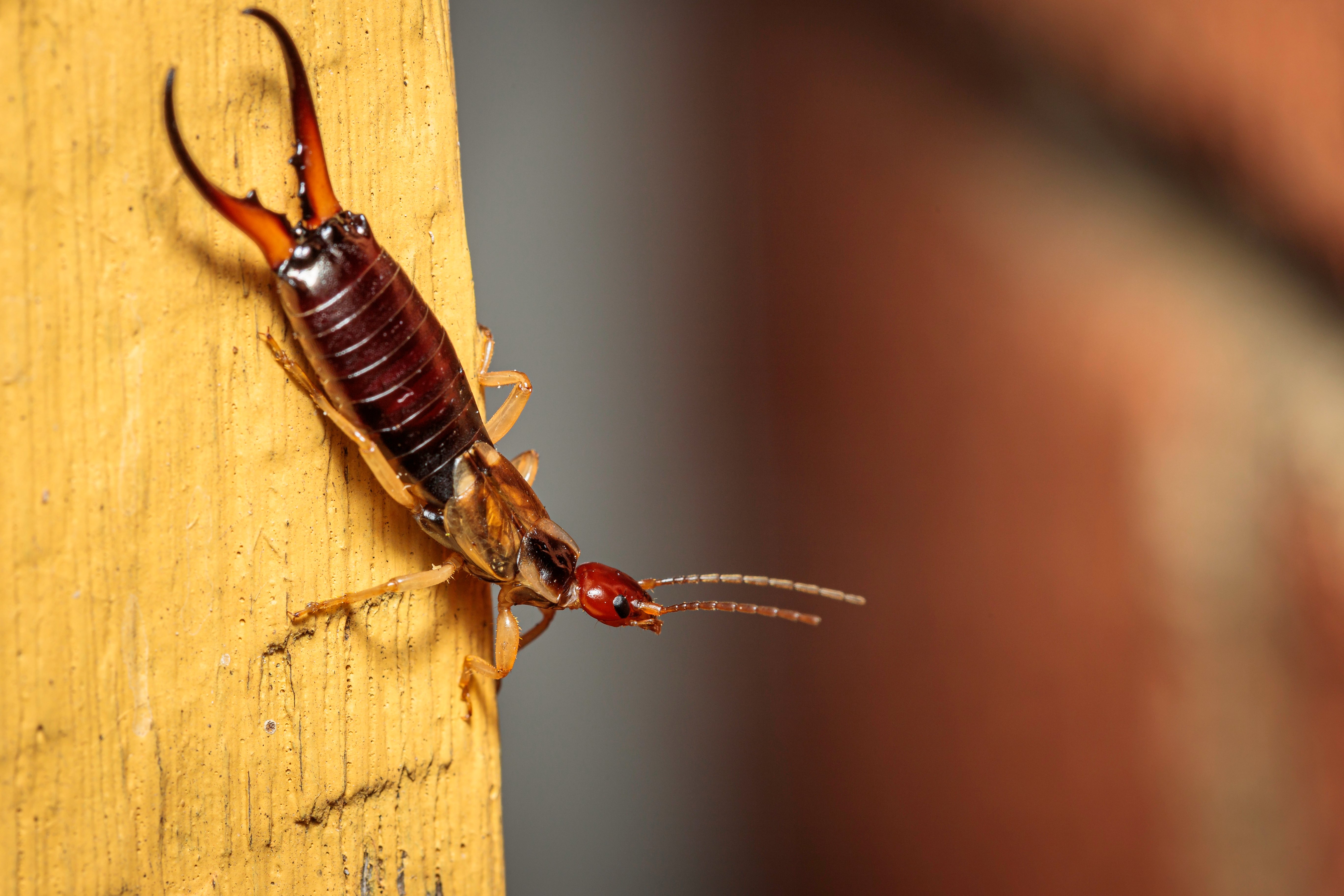Small but mighty, pincher bugs are most known for their scary-looking forceps. These pests are highly active in the spring season and can be found scurrying around all the different dark corners of your home. Knowing how to identify them, why they’re so active in the spring, and more about their habits and lifestyle can go a long way in helping to prevent potential infestations from occurring. Learn all about springtime pincher bug infestations–plus when to call a professional–here!
What are pincher bugs and what do they look like
Pincher bugs–also known as earwigs–are small, long bugs with two pinchers attached to their abdomen. Adult pincher bugs can grow up to ¾ inch and are brown or black in color. Male pincher bugs have curved pincers and female pincher bugs have straight pincers. While they have wings, these pests rarely fly. They’re most active at night and will often hide during the daytime.
Why are pincher bugs so active in spring
Pincher bugs generally have a lifespan of around one year. They mate in the autumn and winter, meaning their eggs usually hatch in the springtime. In colder months, pincher bugs prefer laying underground or staying in more temperate places; as temperatures increase, they grow more active. Once the spring hits, countless more young pincher bugs can be found active around your property, enjoying the weather and progressing with their life cycle.
Be careful of the increased spring pincher bug activity, as it can increase the risk of getting pinched. While pincher bugs are not venomous and lack a stinger, they can use their forceps to attach to the skin if they feel threatened. In some cases, this can break the skin and result in an infection if not properly treated.

Different types of pincher bugs in California
Pincher bugs are one of the most common pests that can be found invading residential properties in Southern California. There are many different types of pincher bugs that live in the region and can enter properties, including the:
- European earwig
- Red-legged earwig
- Striped earwig
These pincher bugs differ in color and behavior. While the striped earwig generally prefers to remain outdoors, both the European and red-legged earwig frequently enter properties.
Why do pincher bugs invade my home
Residential areas are an excellent source of shelter for pincher bugs. Your home is likely a comfortable, safe place for pincher bugs to live in, filled with endless opportunities for food and water. As omnivores, pincher bugs eat smaller pests and decaying vegetation, such as fruit, vegetables, and plant leaves. Pincher bugs are often attracted to sources of light, such as outdoor lights in gardens, but also all of the bright light available in your home as well. They enter residential homes by slipping in through cracks and crevices around your property. Improperly sealed windows and doors, or gaps in foundation, can easily allow a pincher bug into your home. People can accidentally carry pincher bugs in as well, if plants, lumber, or objects normally kept outside are suddenly carried indoors.
Once inside your home, pincher bugs' preferred habitat is in dark, moist areas, such as bathrooms, basements, or crawl spaces. Outdoors, they enjoy living in flower beds, under rocks and leaves, and in other moist areas.

How to prevent a spring pincher bug infestation:
No one wants an uninvited creepy crawling sharing their home, which is why proper pest control is so essential. The best way to prevent a spring pincher bug infestation is by taking preventative action. When springtime rolls around, all homeowners should make sure to keep all windows and doors closed or properly sealed, assess their homes for gaps and cracks, and identify sources that might attract these pests. Using a fan or dehumidifier to dry out damp or humid areas can help reduce the chances of a pincher bug infestation. It’s also important to remove potential outdoor habitats that might entice these pests into moving closer to your indoor space.
Once a spring pincher bug infestation occurs inside your home, getting the pests out can be quite challenging and time-consuming. Pesticide, granule treatments, light traps, and DIY deterrents such as boric acid powder or a dish soap-water solution can assist in removing the bugs. However, the best method of effectively removing a spring pincher bug infestation is to call for professional residential pest control help. AIPM is primed to assist all Southern California homeowners in the presentation and removal of earwig infestations, for locations in Simmi Valley, Santa Clarita, Oxnard, Sherman Oaks, Malibu, Woodland Hills, and beyond!
Conclusion
Get a handle on any residential pincher bug infestation in the spring by learning how to identify these creepy creatures and the methods they use to enter your home, plus helpful DIY tactics that can effectively kick these pests to the curb. For all pincher bug infestations that can’t be removed with these pest control tips, then calling a professional like AIPM for expert assistance on removing an infestation–and methods for preventing other infestations from occurring–is always the best pest control solution.




.webp)



Submit a Comment